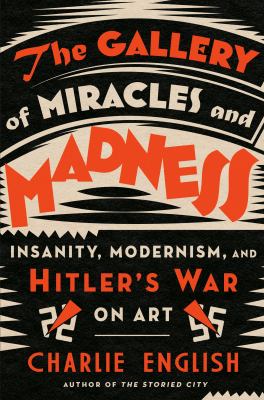
Book
|
The gallery of miracles and madness : insanity, modernism, and Hitler's war on art
Copies
3 Total copies, 3 Copies are in,
0 Copies are out.
Title
The gallery of miracles and madness : insanity, modernism, and Hitler's war on art
Call No
700.9430 ENG
Edition
First US edition.
Authors
Subjects
Prinzhorn, Hans, 1886-1933--Art collections.
Prinzhorn, Hans, 1886-1933. Bildnerei der Geisteskranken.
National socialism and art.
Art and mental illness--Germany--History--20th century.
Art--Destruction and pillage--Germany--History--20th century.
Killing of the mentally ill--Germany--History--20th century.
Prinzhorn, Hans, 1886-1933. Bildnerei der Geisteskranken.
National socialism and art.
Art and mental illness--Germany--History--20th century.
Art--Destruction and pillage--Germany--History--20th century.
Killing of the mentally ill--Germany--History--20th century.
Language
English
Published
New York : Random House, [2021]
ISBN
9780525512059 : HRD
LCCN
2020044464
MLA
APA
Chicago
0
/
0








